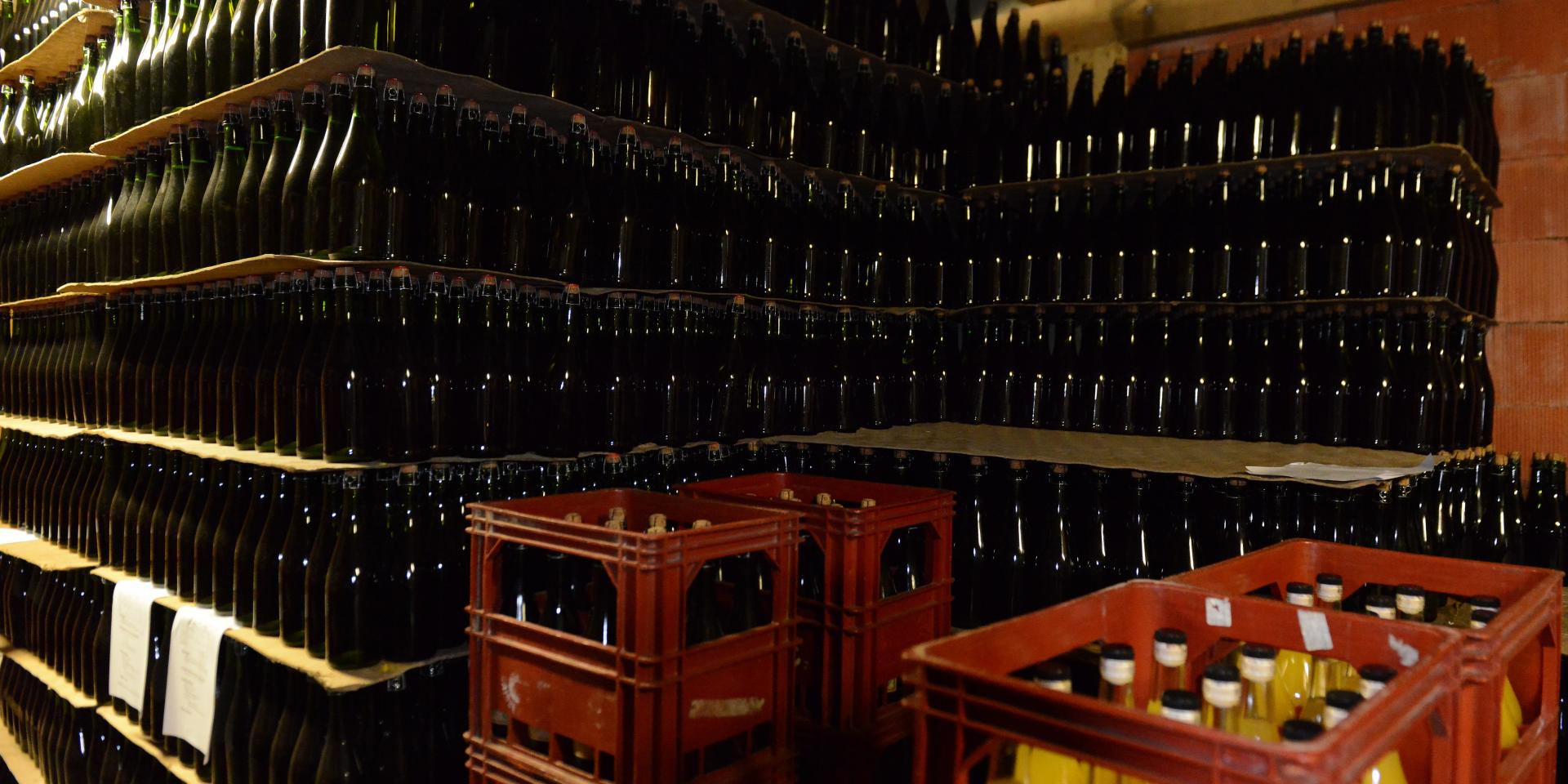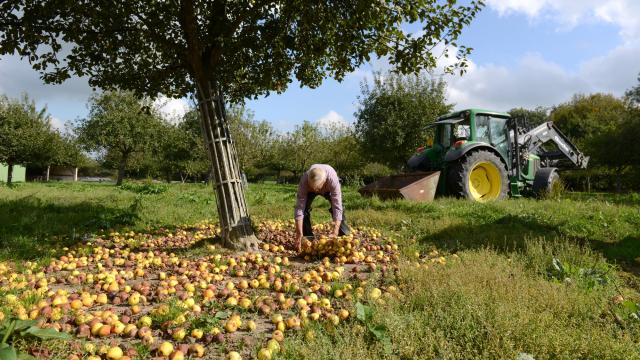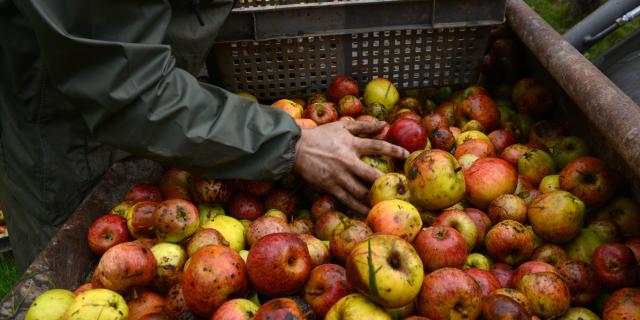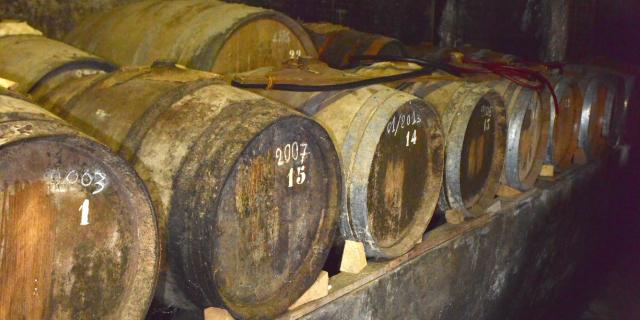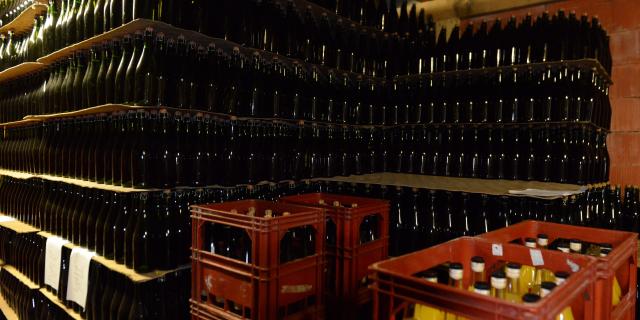Cider: what it is, how it’s made, its benefits… you’ll know it all!
Cider: how it’s made, its benefits… in short, you’re going to know everything there is to know about this very local beverage!
This sparkling, refreshing beverage has been conquering the world for centuries. From the press to the bottle, we’re going to delve into the making of cider, exploring every stage of the traditional process that transforms simple apples into an enchanting beverage. But cider is much more than just a drink: it also offers numerous health benefits, which we’ll reveal in detail. Get ready to learn more about this beverage that blends tradition and modernity, while discovering how it can contribute to your well-being. Ready to dive into the world of cider? Let’s press on!
 Two bottles of artisanal beer are placed on a wooden barrel. One of the bottles is in the foreground, while the other is slightly blurred in the background. The lighting is dim, creating a warm and cozy atmosphere. A wooden tool with a wooden handle is also visible next to the bottles.
Two bottles of artisanal beer are placed on a wooden barrel. One of the bottles is in the foreground, while the other is slightly blurred in the background. The lighting is dim, creating a warm and cozy atmosphere. A wooden tool with a wooden handle is also visible next to the bottles. Two bottles of artisanal beer are placed on a wooden barrel. One of the bottles is in the foreground, while the other is slightly blurred in the background. The lighting is dim, creating a warm and cozy atmosphere. A wooden tool with a wooden handle is also visible next to the bottles.
Two bottles of artisanal beer are placed on a wooden barrel. One of the bottles is in the foreground, while the other is slightly blurred in the background. The lighting is dim, creating a warm and cozy atmosphere. A wooden tool with a wooden handle is also visible next to the bottles.